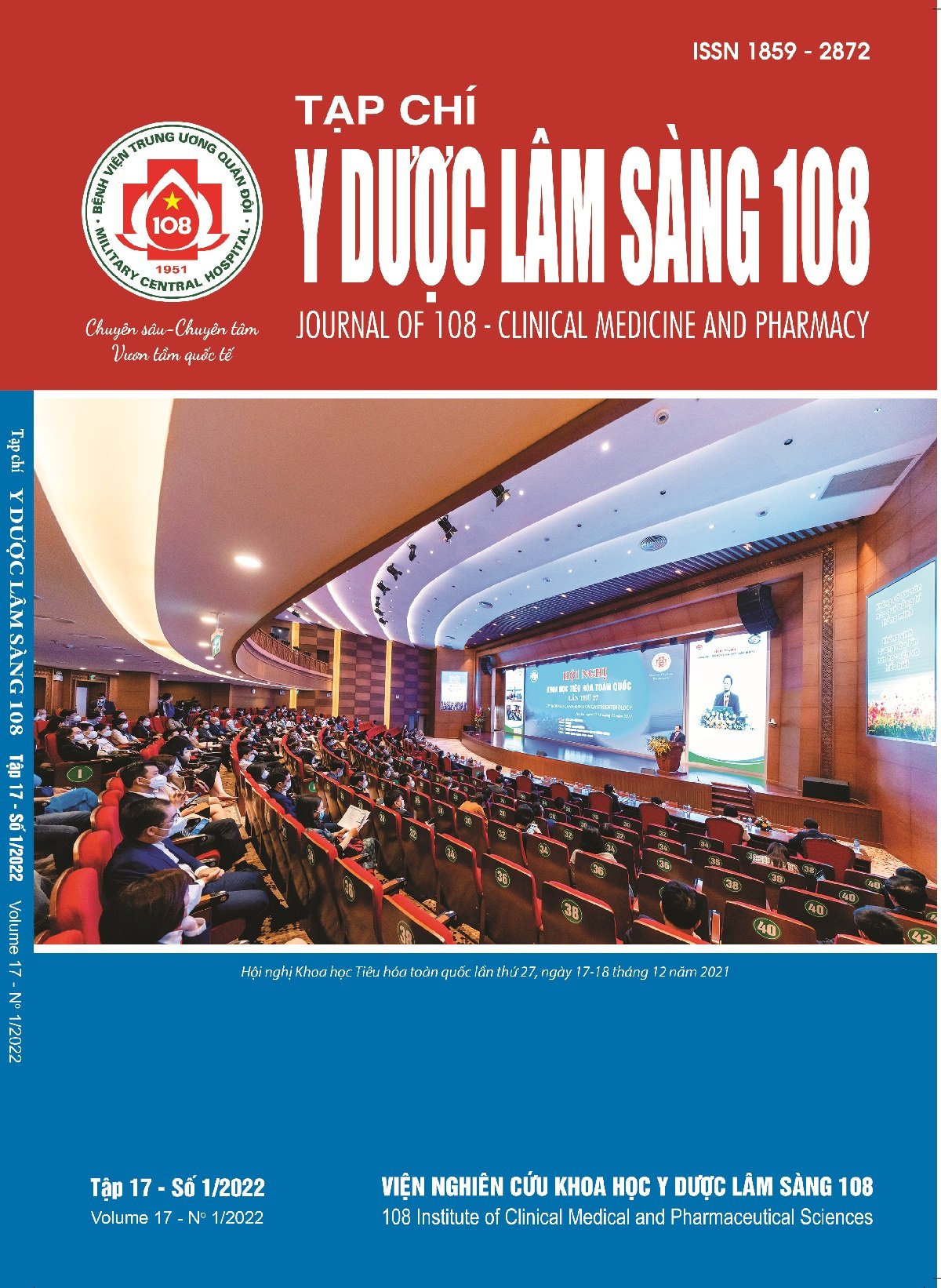Relationship between outcome after recanalization by mechanical thrombectomy with clinical characteristics, computed tomography images and recanalization results in patients with acute basilar artery occlusion
Main Article Content
Keywords
Abstract
Objective: The aim of this study was to investigate the relationship between outcome after recanalization by mechanical thrombectomy with clinical characteristics, computed tomography images and recanalization results in patients with acute basilar artery occlusion (ABAO). Subject and method: Retrospectively 49 patients with ABAO, treated with mechanical thrombectomy between November 2019 and May 2020 were identified. The relationship between functional outcomes and baseline characteristics, NIHSS and Glasgow scale on admission, pre-interventional pc-ASPECTS, the location of the clot, the present of a hyperdense basilar artery, as well as reocclusion and post-interventional symptomatic intracranial hemorrhage (sICH) were evaluated. Target variables were mRS at 90 days and mortality over 90 days. Result: Good outcome in 90-day after ABAO (mRS 0 - 2) was attained in 44.9% (n = 49) of patients, overall mortality was 34.7%. The efficacy predict outcome in 90-day after ABAO of MT within 24 hours of stroke onset were patients with atrial fibrillation [OR 0.197, 95% CI (0.003 - 0.95), p=0.016] Glasgow scale on admission lower 8 [0.125, 95% CI (0.02 - 0.64) p=0.01]. The NIHSS on admission lower 15 [4.40, 95% CI (1.22 - 15.84) p=0.032] and post-interventional imaging revealed sICH [2.7, 95% CI (1.65 - 4.41) p=0.015]. Risk for death was reduced by more than 90% if no post-interventional sICH present [0.053 95% CI (0.005 - 0.53) p=0.018]. Conclusion: MT in patients with ABAO within 24 hours of stroke onset had a high successful recanalization rate, overall mortality was 34.7%. Atrial fibrillation, low NIHSS and high Glasgow coma scale on admission, absence of post-intervention sICH were highly associated with favorable outcome.
Article Details
References
2. Powers WJ, Derdeyn CP, Biller J et al (2019) Guidelines for the early management of patients with acute ischemic stroke: 2019 update to the 2018 for the early management of patients with acute ischemic stroke. A guideline for healthcare professionals from the American Heart Associaton/American stroke associaton. Stroke 50: 344-418.
3. Lindsberg PJ, Pekkola J, Strbian D et al (2015) Time window for recanalization in basilar artery occlusion: Speculative synthesis. Neurology 85: 1806-1815.
4. Mori E, Minematsu K, Nakagawara J et al (2010) Effects of 0.6 mg/kg intravenous alteplase on vascular and clinical outcomes in middle cerebral artery occlusion: Japan Alteplase Clinical Trial II (J-ACT II). Stroke 41(3): 461-465.
5. Hacke W, Kaste M, Fieschi C et al (1998) Randomised double-blind placebo-controlled trial of thrombolytic therapy with intravenous alteplase in acute ischaemic stroke (ECASS II). Second European-australasian acute stroke study investigators. Lancet 352(9136): 1245-1251.
6. Phan K, Phan S, Huo YR et al (2015) Outcomes of endovascular treatment of basilar artery occlusion in the stent retriever era: A systematic review and meta-analysis. Journal of NeuroInterventional Surgery 8(11): 1107-1115.
7. Nagel S, Kellert L, Möhlenbruch M et al (2013) Improved clinical outcome after acute basilar artery occlusion since the introduction of endovascular thrombectomy devices. Cerebrovascular Diseases 36(5-6): 394-400.
8. Baek JM, Yoon W, Kim SK et al (2014) Acute Basilar artery occlusion: Outcome of mechanical thrombectomy with solitaire stent within 8 hours of stroke onset. American Journal of Neuroradiology 35(5): 989-993.
9. Ravidren J, Pérez MA, Hellstern V et al (2019) Predictors of outcome after endovascular thrombectomy in acute basilar artery occlusion and the 6hr time window to recanalization. Frontier in Neurology 10: 923.
10. Puetz V, Khomenko A, Hill MD et al (2011) Extent of hypoattenuation on CT angiography source images in basilar artery occlusion: Prognostic value in the Basilar Artery International Cooperation Study. Stroke 42(12): 3454-3459.
11. Mohlenbruch M, Stampfl S, Behrens L et al (2013) Mechanical thrombectomy with stent retrievers in acute basilar artery occlusion. American Journal of Neuroradiology 35(5): 959-964.
12. Goldmakher GV, Camargo EC, Furie KL et al (2009) Hyperdense basilar artery sign on unenhanced CT predicts thrombus and outcome in acute posterior circulation stroke. Stroke 40: 134-139
 ISSN: 1859 - 2872
ISSN: 1859 - 2872
